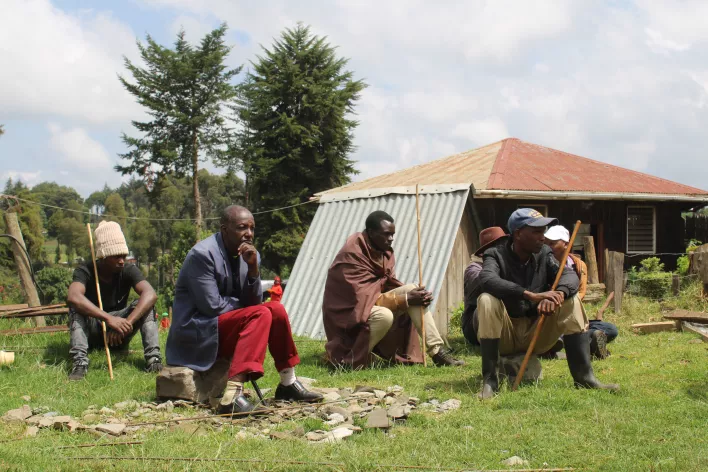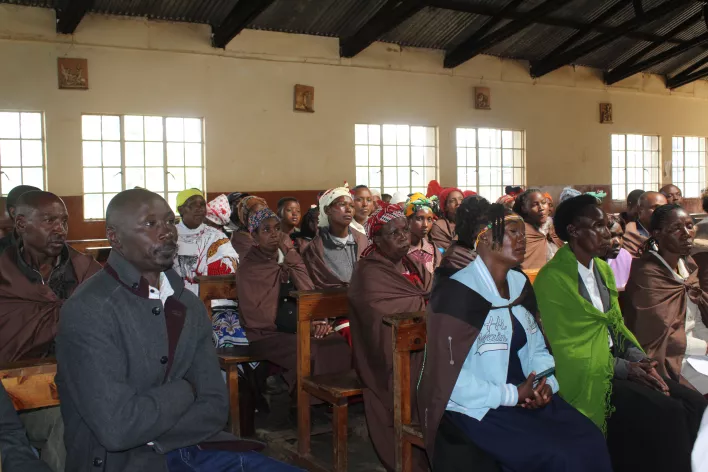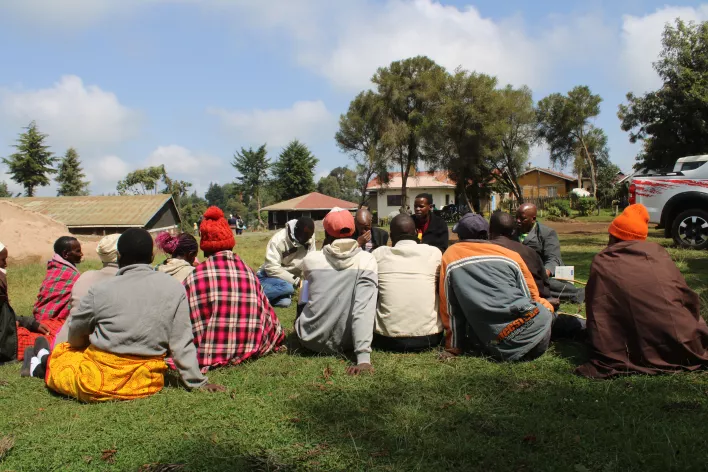Up that ridge is where we used to live,” she says, pointing into the distance. The air is biting cold, and a thick mist blankets the landscape. Yet even through the harsh weather, the lush green hills are unmistakable—rolling endlessly into the horizon. For the Ogiek indigenous tribe a community of approximately 52,590 people according to the 2019 Kenyan census, displacement and eviction are not just words; they are a painful legacy. Their struggle against forced removals stretches back to the British colonial era—a battle that has persisted for generations.

During our visit to Sasumwani, we sat with Ogiek families displaced once again in 2023, listening as they shared their stories in a breakout session. “I was born and raised in this forest—it’s all I’ve ever known,” one elder began, voice heavy with loss. “Now, I have no job, no livelihood. I survive on borrowed means, day after day. Life is hard, and the weight of it wears on our minds. You may not see our pain on our faces, but the wound runs deep.”
Their reality is stark. Once, they lived on acres of land in sacred harmony with the forest, acting as its guardians while it provided for them through beekeeping and careful cultivation Now, most have nothing—only the “lucky” ones scrape by as tea pickers. Their homes were burned to the ground, their belongings destroyed. When human rights defenders tried to document the police setting fires, many were too terrified to continue, forced to retreat under threats. Worse still, they feel abandoned. “No government official wants to hear us,” they told us. Visits to county offices end in closed doors or silence. When they persist, they’re met with threats—officials warning to call the police rather than address their suffering. This is more than displacement. It’s erasure.

In the face of this erasure, the Ogiek People’s Development Program (OPDP) was founded by Ogiek defenders as a steadfast pillar of the community. OPDP was founded to address the very historical injustices that have deprived the Ogiek of their rights as Kenyan citizens. It is dedicated to promoting the recognition of Indigenous culture, advocating for land rights, and protecting the environment that is central to the Ogiek identity.
The evictions have triggered a ripple effect, unleashing crises that spare no age, gender, or generation. Without job security, many men have succumbed to depression, turning to alcohol as a coping mechanism. Traditional Ogiek family structures, where each household maintained three separate homes (for parents, sons, and daughters)—have collapsed. Now, families cram into single rooms, a violation of their cultural norms that has strained marriages and destabilized communities. Child labor has surged as families can no longer afford school fees; children now join their mothers in potato fields to survive. Older adolescents, unable to adapt, increasingly turn to drug abuse, while young girls face early marriages and teenage pregnancies.
The Ogiek’s health has suffered too. In the Mau Forest, they relied on honey and traditional medicines, their bodies, they believe, attuned to the forest’s rhythms. Though unverified scientifically, they insist that displacement has exposed them to unfamiliar illnesses, with forest-based remedies now out of reach. Finally, they grieve without closure. Their ancestral burial grounds lie in the Mau. Now, with no land and families scattered, even death leaves them untethered. In early July, PBI Kenya visited the Ogiek community in Sasumwani, Narok County, in collaboration with the Ogiek People’s Development Programme to support ongoing psychosocial healing and accompany community-based human rights defenders (HRDs) in their efforts. From the psychosocial follow-up sessions, key challenges emerged: mental health struggles and fragmented voices. Some demand financial compensation and new land; others refuse to settle for anything less than their ancestral home.

Twice, the African Court on Human and Peoples’ Rights has ruled in favor of the Ogiek—first in 2017, affirming their ancestral land rights, and again in 2022, ordering reparations for decades of harm. Yet these victories exist only on paper. The Kenyan government has dragged its feet, offering excuses but no action. More significantly, over 700 Ogiek families were violently evicted from Sasumwani in November 2023. Today, most of them remain homeless, unprotected, and ignored.
The Ogiek’s suffering is compounded by systemic erasure. Despite being one of Kenya’s oldest Indigenous communities, they are not included on the government’s official registry of ethnic groups. This bureaucratic exclusion means they are effectively invisible to the state, denying them access to formal employment within the government and political representation, Worse, they are smeared as “environmental threats,” a myth that obscures their centuries-old role as guardians of the Mau Forest. This false narrative not only strips them of their identity but robs Kenya of a vital partnership in conservation.
At a June 2025 African Court hearing on Kenya’s compliance with the reparation’s orders given in 2022, government officials cited budget shortfalls and bureaucratic delays as reasons for their inaction. The Ogiek, weary of empty promises, countered with hard truths: no land has been restored, no reparations paid, no policies changed.
Yet, despite this relentless pressure, the Ogiek remain hopeful. Their steadfastness is shown in the daily struggle to survive through odd jobs and temporary work, all while holding onto the hope of returning home. One truth is clear: the Ogiek need to be seen, heard, and supported. Their resilience is undeniable, but without justice, their legacy and their future hangs in the balance To secure that future, the Kenyan government must move beyond promises to tangible action by fully implementing the court’s decision, protecting their ancestral lands, and facilitating their rightful resettlement. This is not just a legal obligation, but a moral imperative.
